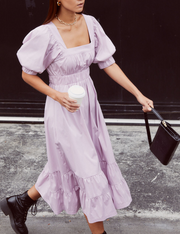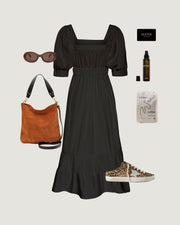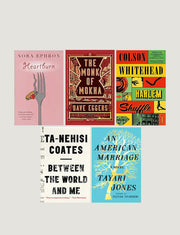

A well-loved garment that recalls comfort and care. A sartorial source of memories and maternal love.
It’s common to have a piece of clothing containing a scent, silhouette or even a stain, so enmeshed in the fibers and our memories that it provides instant recall to the time and place we wore it, or directly back to the significant person who wore it in our presence.
It can be a robe, an apron or a perfectly worked-in pair of jeans with the outline of a wallet compressed into the back pocket; all items that endure the rote movements of mundane daily life, but when linked to the moments and people that raised us, the garment can be a lifeline, a time machine and a reminder that a piece of fabric has the power to conjure the individuals who always gave us comfort.
This, to me, is a duster. Filipinos refer to a common house dress as a duster. It is a simple, loose and airy dress that is usually knee length and with a tank style neckline. It can have a tropical or tonal floral print and is generally accessible in price. Whether worn by a wealthy head of the household, a nanny or maid, dusters provide parity in that they symbolize one thing: caring for others.
My mother, grandmother and aunts all wore dusters to endure intensely hot and humid days in the Philippines and then a more temperate and dry heat after immigrating to California. Dusters were worn while cooking, cleaning, relaxing and sometimes out to run errands like grocery shopping, that tended to connect back to the home.
As the lines between how, when and where we work and what is considered work for women and caregivers these days, Duster the brand aims to reimagine what the traditional duster can look like given the different types of demands placed on our lives today.
After too many days spent in sweats, athleisure or jeans while working from home, my car, the playground or a plane, I looked to my heritage when searching for a piece that would address the void I saw and felt. I recalled the dusters of my youth and the instant comfort in the memories attached to the rotating collection my mom wore after a long day at the office and always on the weekends.
Particularly now as the look of work has changed and entails everything from business meetings to planning playdates, heating up chicken nuggets and filling prescriptions, Dusters can be a sartorial bridge between all of the work we do, both paid and unpaid, visible and invisible.
All while taking us through our daily lives and all of the ways we work, play and care.

